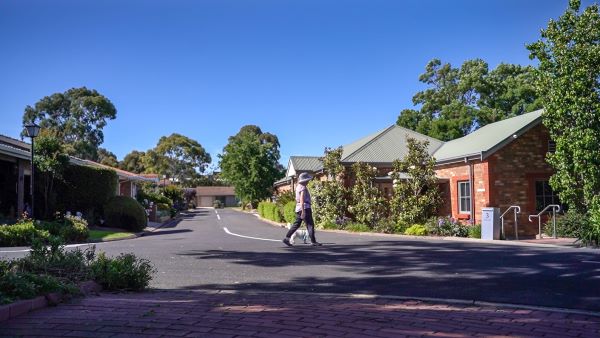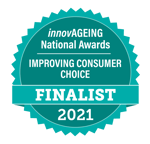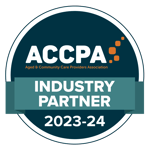A new care funding model is due to replace the current Aged Care Funding Instrument (ACFI) in October 2022. The new care model, the Australian National Aged Care Classifications (AN-ACC) is set to provide a more sustainable and efficient system by better matching resident funding with the costs of delivering care. The new funding model brings comprehensive changes to workforce, documentation and technology, so it’s essential that all aged care providers are prepared for the change.
What is AN-ACC?
The AN-ACC model will be based on the individual care needs and the costs of care that benefit all residents. In order to meet the requirements for the new funding model, Aged Care Homes will have to report a certain number of mandatory care minutes each day.
Read our complete guide to AN-ACC to find out more.
AN-ACC: 6 key facts
In a survey conducted by Mirus Australia, it was found that 75% of aged care providers have done little to nothing to prepare for the introduction of AN-ACC. To ensure your home receives the required funding, it's essential to start taking steps in advance of the new care funding model being introduced. We have broken down the key bits of information to help you prepare for the change in October.
1. AN-ACC Starting Price
The AN-ACC starting price for the 2022-23 financial year is set to be $216.80. At this price, the expected average funding per bed per day is due to be roughly $225, which is $33 higher than the expected 2021-22 average funding per bed per day under ACFI.
The cost of the AN-ACC incorporates the cost of standard day care and the following aspects:
- Homeless and viability supplements
- The current AFCI basic subsidy funding
- $3.9 billion investment in care minutes funding uplift beginning in October 2022
- $3.2 billion investment for the $10 per resident per day Basic Daily Fee supplement
2. AN-ACC Care Funding Elements
The funding elements for AN-ACC will compromise of funding amounts currently provided through the:
- ACFI basic subsidy
- Homeless supplement and the viability supplement
- Basic Daily Fee supplement
Further to this, from October 1 2022, the Government will provide $3.9bn in funding across three years to help boost staffing in residential aged care homes in order to meet the new care minute standards.
3. AN-ACC Requirements
In order to gain funding, certain reporting requirements in the My Aged Care portal will be mandatory. From July 2022, a new quarterly version of the Aged Care Financial report will be introduced aimed at capturing care minutes and home level information. Aged Care providers will also be required to submit a monthly care statement to residents, their carers and family, which will outline all care received by the resident and any changes and events that may have occurred during the month.
Reporting requirements are set to develop further. In December 2022, a Star Rating System will be put in place to help senior citizens to make informed choices about their care by comparing staffing levels between facilities. This Star Rating System will be informed by the submitted services and care minutes data reports.
A year after AN-ACC is introduced, Aged Care providers must meet and report on a mandatory care time in order to gain the required funding. The standard reporting time will be an average of 200 minutes per resident, which must include 40 minutes of a registered nurse’s time.
4. AN-ACC Will Be Assessed Through Independent Assessors
From the 1st of October, providers will no longer be required to conduct ACFI appraisals of residents in their care, allowing staff to put their focus on the planning and delivery of care to residents. This means that an independent clinical assessment workforce will be required to take responsibility for the assessment of residents, with the outcome being used to decide an AN-ACC classification level.
A period of ‘shadow assessments’ is currently underway to help prepare for the transition to AN-ACC. The shadow assessment requires all current residential aged care residents to be assessed by the independent assessor to receive an AN-ACC classification level before the new funding starts.
5. AN-ACC Weightings
The AN-ACC model will be weighted by applying the National Weighted Activity Units (NWAUs) or by weightings that reflect the individual care needs of a resident and the variation in the costs of providing care based on the characteristics of a home. Weighting the care funding model in this way allows funding to be better matched with the residents needs with the cost of delivering care.
6. AN-ACC Classification Levels
The funding for each aged care resident will be based on their individual AN-ACC classification level assigned by the independent assessors:
- Class 1 – Admit for palliative care
- Class 2 - Independent without compounding factors
- Class 3 – independent with compounding factors
- Class 4 – Assisted mobility, high cognition, without compounding factors
- Class 5 – Assisted mobility, high cognition, with compounding factors
- Class 6 – Assisted mobility, medium cognition, without compounding factors
- Class 7 – Assisted mobility, medium cognition, with compounding factors
- Class 8 – Assisted mobility, low cognition
- Class 9 – Not mobile, higher function, without compounding factors
- Class 10 – Not mobile, higher function, with compounding factors
- Class 11 – Not mobile, lower function, lower pressure sore risk
- Class 12 – Not mobile, lower function, higher pressure sore risk, without compounding factors
- Class 13 – Not mobile, lower function, higher pressure sore risk, with compounding factors
The importance of a digital clinical documentation system to help you prepare for AN-ACC
Adopting a digital clinical documentation system can help your Aged Care home meet these requirements and ensure your home is accurately recording care minutes. Digital clinical documentation allows for improved planning and monitoring of residents’ care as it is being delivered, allowing for more accurate recordings. This, in turn, reduces time spent on evidencing care minutes and enables you to focus on delivering the best possible care to its residents.
Person Centred Software’s Care Delivery App will help to ensure your Aged Care Home meets the requirements of AN-ACC and secure the necessary funding. With our icon-driven, easy to use software, Aged Care Homes can evidence care at the point of delivery, making the process faster, more efficient and more accurate.
To find out more about how Person Centred Software can help you with the transition to AN-ACC, contact the team today.











